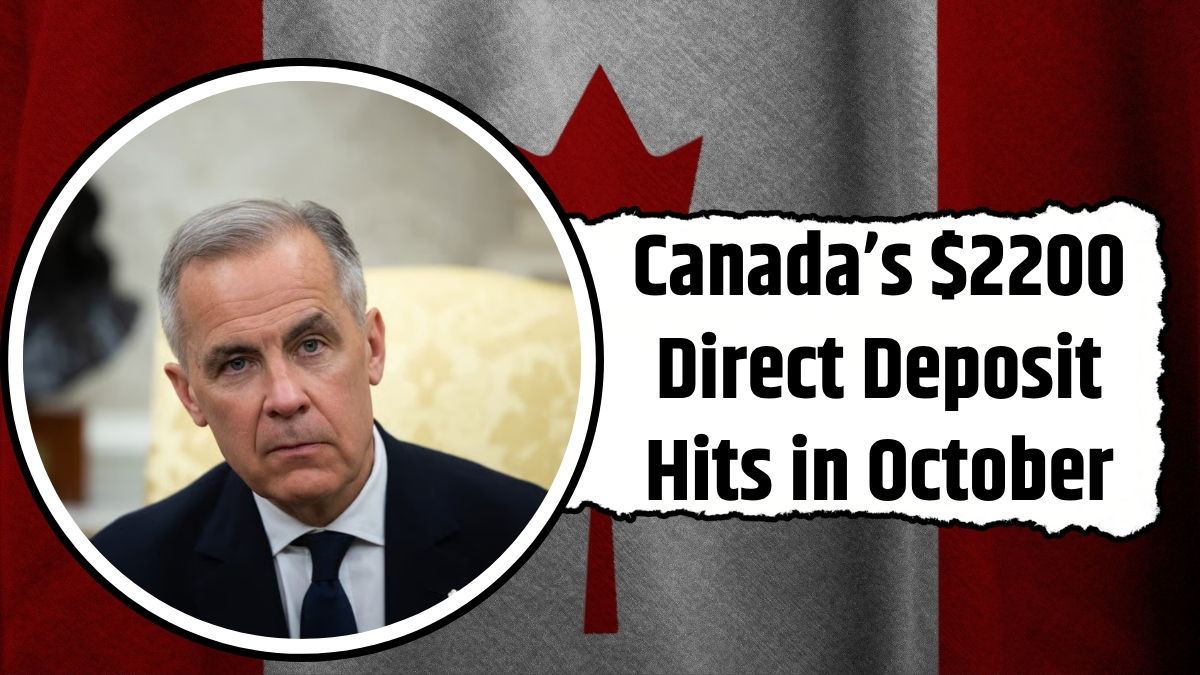Canada has confirmed a $2,200 direct deposit for seniors, people with disabilities, and low-income residents. This one-time, non-taxable payment is meant to help with the rising cost of living and will be sent automatically on October 29, 2025, for those already receiving government benefits like OAS, GIS, or CPP-D.
If you’re not on one of those programs, you’ll need to apply by September 30. Let’s walk through who qualifies, how to apply, and what you can do to make sure you don’t miss out.
A Lifeline for Vulnerable Canadians
The $2,200 benefit has been introduced to provide immediate financial help for Canadians facing economic challenges, especially those on fixed or limited incomes. With inflation driving up the cost of food, rent, and health care, this one-time support is designed to ease the financial burden on some of the most affected individuals.
What the $2,200 Payment Covers
The government expects recipients to use the funds to manage critical expenses such as:
- Rent or mortgage payments
- Heating, electricity, or utility bills
- Grocery shopping and household essentials
- Transportation needs or vehicle maintenance
- Prescription drugs, dental, or medical costs
This non-repayable and non-taxable payment will not affect your eligibility for other federal or provincial benefits.
Key Details at a Glance
| Feature | Details |
|---|---|
| Payment Amount | $2,200 (One-Time) |
| Eligible Groups | Seniors, low-income, disabled individuals |
| Deposit Date | October 29, 2025 |
| Automatic Payment? | Yes (if receiving OAS, GIS, or CPP-D) |
| Application Deadline | September 30, 2025 |
| Processing Time | 4–6 weeks |
| Taxable? | No |
| Official Website | Canada.ca |
Who Is Eligible for the $2,200 Benefit?
To qualify for this direct deposit, you must meet specific age, residency, and income criteria.
Age Requirement
You must be at least 65 years old by December 31, 2025. However, individuals under 65 can also qualify if they receive disability benefits such as CPP-D.
Residency Status
You must be a Canadian citizen or permanent resident who has lived in Canada for a minimum of 10 years.
Income Thresholds
Your annual income must fall below the following limits:
| Household Type | Annual Income Cap |
|---|---|
| Single Adult | Less than $35,000 |
| Couple/Household | Combined under $45,000 |
Note: Higher thresholds may apply in some provinces for residents with disabilities or dependents.
Who Will Receive the Payment Automatically?
If you’re already receiving Old Age Security (OAS), Guaranteed Income Supplement (GIS), or Canada Pension Plan Disability (CPP-D), you do not need to apply.
In such cases, the $2,200 will be automatically deposited into your account or sent by cheque on October 29, 2025.
How to Apply If You’re Not on OAS, GIS, or CPP-D
For those not already receiving qualifying benefits, manual application is required. Here’s a step-by-step guide:
Step 1: Check Eligibility
Visit Canada.ca and use the Benefits Finder tool to confirm whether you qualify.
Step 2: Gather Required Documents
You’ll need to provide:
- Government-issued ID (driver’s license, passport, PR card)
- Proof of Canadian residency (utility bill, lease agreement, or tax return)
- Proof of income (T4 slip, pay stub, or CRA Notice of Assessment)
Step 3: Complete the Application Form
Download the application from Canada.ca or pick one up at a Service Canada Centre. Fill it out carefully to avoid delays.
Step 4: Submit Before the Deadline
Send your completed form by mail or hand-deliver it. It must be received no later than September 30, 2025.
Step 5: Wait for Confirmation
Processing takes 4 to 6 weeks. Watch for an email or mailed letter confirming whether your payment has been approved.
Important Tip: Ensure your banking information is up to date with CRA or Service Canada to avoid delays in receiving your funds.
Payment Process: What to Expect
The payment will be issued on October 29, 2025, in one of two ways:
- Direct deposit, if your bank details are on file with the government
- Cheque by mail, if you haven’t registered for direct deposit
To avoid unnecessary delays, confirm your direct deposit setup with CRA or Service Canada before the end of September.
Smart Ways to Use the $2,200 Payment
This isn’t a bonus—it’s a strategic support measure. Consider using the payment to manage:
- Rent or mortgage arrears
- Utility and heating bills
- Groceries and daily essentials
- Medical needs—prescriptions, dental care, vision exams
- Transport—fuel, car maintenance, or transit passes
The payment is yours to use where it’s most needed—no repayment, no taxation, and no penalties.
Frequently Asked Questions (FAQs)
Q1. When is the $2,200 deposit coming?
The payment will be issued on October 29, 2025.
Q2. Do I need to apply for the payment?
Only if you are not receiving OAS, GIS, or CPP-D. If you are, it’s automatic.
Q3. Is the $2,200 benefit taxable?
No. It is completely tax-free and will not affect your other government benefits.
Q4. Can I qualify if I’m under 65?
Yes, if you receive CPP-D or other disability-related benefits, you may still be eligible.
Q5. What is the income cap to qualify?
- Singles: under $35,000 annually
- Couples/households: under $45,000 combined









